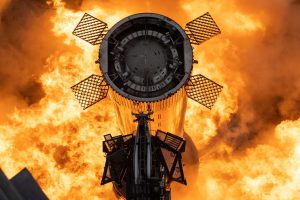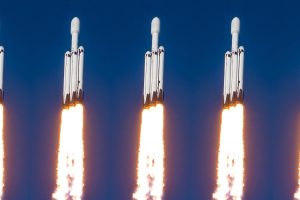Key Points
- 🚀 SpaceX launched its 50th mission of the year, deploying 22 V2 mini Starlink satellites into low Earth orbit from Cape Canaveral Space Force Station.
- 🌩️ Weather delays forced SpaceX to postpone the launch, waiting for storm clouds to clear around the Space Coast in Florida.
- 🛰️ The 22 Starlink satellites joined Group 6 of the Starlink constellation, with SpaceX focusing on upgrading their capabilities and phasing out older satellites.
- 📷 A dramatic vapor cone formed during the Falcon 9 launch due to high humidity, creating a rainbow effect as light passed through the condensation.
- 🚀 Falcon 9 B1062 successfully landed on the droneship ‘A Shortfall of Gravitas’ after completing its 15th launch and marking the 50th overall orbital mission for SpaceX this year.
- 🌐 The Falcon Heavy is next in line to launch the Echostar XXIV/Jupiter 3 communications satellite with a window opening at 11:04 p.m. ET tonight.
Following a series of weather delays, SpaceX successfully launched 22 V2 mini Starlink satellites into low Earth orbit from Space Launch Complex 40 at Cape Canaveral Space Force Station shortly after midnight.
Initially scheduled for a 10:20 p.m. ET launch, SpaceX encountered weather-related obstacles, leading to multiple delays until the storm clouds cleared around the Space Coast.
The 22 Starlink satellites were sent into orbit towards the South East, becoming part of Group 6 of the Starlink constellation. This specific mission, known as Starlink Group 6-7, was launched into a 43-degree orbital inclination. SpaceX has now shifted to launching the upgraded V2 mini Starlinks exclusively, as they work to enhance the capabilities of their constellation and phase out older, less advanced Starlink satellites.
Launching after the summer thunderstorms in Florida proved beneficial due to the increased humidity. Just before reaching Max Q (Maximum Dynamic Pressure), the Falcon 9 surpassed supersonic speeds, and with the high humidity, a vapor cone formed around the rocket. SpaceX photographer Ben Cooper captured this stunning moment as the light from the 9 Merlin 1D engines passed through the condensation, even creating a rainbow effect.
If the weather remains favorable, the Falcon Heavy launch later tonight promises to provide a dramatic view similar to what was observed during this Starlink mission.
Following stage separation, Falcon 9 B1062 landed on the droneship ‘A Shortfall of Gravitas’ eight-and-a-half minutes after lift-off completing its 15th launch and landing. The two fairing halves on this flight were both flying for their second time.
This was the 50th overall orbital mission of the year for SpaceX and the 48th for the Falcon 9. SpaceX has now had 220 consecutive successful launches and 136 consecutive Falcon recoveries.
Coming up next for SpaceX will be the Falcon Heavy launching the Echostar XXIV/Jupiter 3 communications satellite. The 99-minute launch window opens at 11:04 p.m. (03:04 UTC) ET tonight.





